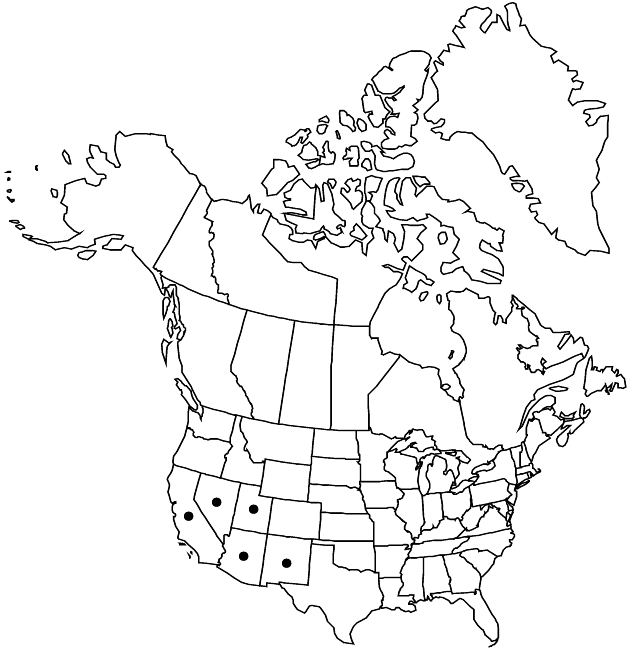Cirsium arizonicum var. arizonicum
Stems glabrous to tomentose, usually without septate trichomes. Leaf-blades unlobed to deeply divided, faces usually ± tomentose, at least abaxially, usually without septate trichomes; main marginal spines 2–15 mm, often stout; cauline bases narrowed, truncate or clasping, but not or only slightly decurrent. Involucres cylindric to campanulate. Phyllary spines 1–20 mm, slender to very stout. Corollas usually bright red or pink, 24–34 mm, tubes 7–12, throats 2–5 mm, lobes 13–18 mm; style tips–2.5 mm. 2n = 30, 32, 34 (as C. arizonicum × C. nidulum).
Phenology: Flowering spring–fall (May–Oct).
Habitat: Pine-oak-juniper woodlands, montane coniferous forests, subalpine
Elevation: 1200–3600 m
Distribution

Ariz., Calif., Nev., N.Mex., Utah.
Discussion
Variety arizonicum is widely distributed across the uplands of the American Southwest from eastern California across the Basin and Range Province to the Colorado Plateau and the mountains of Arizona and New Mexico. It is the most widely distributed and most variable variety of Cirsium arizonicum. Viciously spiny plants with deeply divided leaves from the northern part of the range of var. arizonicum often have been treated as C. nidulum. These plants form a continuum with the less spiny plants of more southerly distribution, however, and separation of two varieties (or species) is arbitrary.
Leaves of some plants of var. arizonicum from Coconino County, Arizona, resemble those of the sympatric C. wheeleri. I have not seen hybrids between these taxa, but it is likely that some genetic interchange between the two has taken place in the past.
Selected References
None.
Lower Taxa
"fine" is not a number.